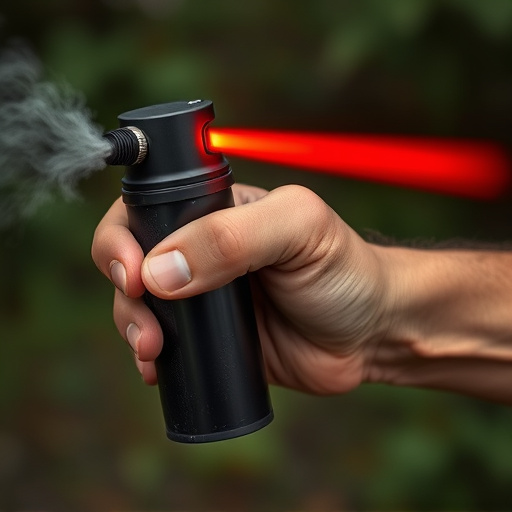Non-lethal self-defense tools like pepper spray use capsaicin to cause temporary irritation. To remove pepper spray from clothing, quickly change and isolate the garment, then create a mild soap and warm water solution. Soak for 15-20 minutes, wash normally with cold water, and rinse thoroughly. Follow local laws regarding possession, use, and decontamination of pepper spray, including specific rules for removing it from clothing or eyes.
“Discover the power of non-lethal inflammatory self-defense tools, a game-changer in personal safety. This comprehensive guide explores innovative options beyond traditional pepper spray. We delve into effective strategies for removing pepper spray stains from clothing, a practical skill to enhance your defense arsenal.
Furthermore, understand the legal framework surrounding these tools and essential safety precautions to ensure responsible use. By arming yourself with knowledge, you can make informed choices for your protection.”
- Understanding Non-Lethal Inflammatory Self-Defense Tools
- Removing Pepper Spray From Clothing: Effective Steps and Tips
- Legal Considerations and Safety Precautions for Using These Tools
Understanding Non-Lethal Inflammatory Self-Defense Tools
Non-lethal inflammatory self-defense tools, such as pepper spray, offer a crucial alternative to lethal force in personal safety situations. These devices utilize capsaicin, the active ingredient in chili peppers, to cause temporary but severe irritation, disorienting and enabling individuals to escape potentially dangerous encounters. Understanding how these tools work is essential for effective deployment and subsequent decontamination, like removing pepper spray from clothing.
Proper usage involves aiming for the eyes, nose, and mouth, areas most sensitive to capsaicin. After use, thorough washing with water and mild soap is critical to remove the irritant. Special care must be taken to address clothing contaminated with pepper spray, as it can remain active for hours. This includes wearing protective gloves and using specialized decontaminating solutions or even baking soda pastes to neutralize any residual effects before laundering.
Removing Pepper Spray From Clothing: Effective Steps and Tips
Pepper spray, while an effective self-defense tool, can leave a lingering residue on clothing, causing discomfort and potential health issues if not properly managed. Removing pepper spray from your garments requires a systematic approach to ensure maximum effectiveness. Start by quickly changing out of the affected clothes as soon as possible after exposure. Do not wash the garment immediately; instead, isolate it from other fabrics to prevent cross-contamination.
Begin by gently brushing off any visible powder using a stiff brush or card to eliminate excess pepper spray. Next, mix a solution of mild soap and warm water in a large container. Test the solution on a small, inconspicuous area of the fabric first to ensure colorfastness. Soak the soiled clothing in the mixture for around 15-20 minutes, allowing the detergents to break down the pepper spray components. After soaking, gently wash the garment as you would normally, using cold water to minimize any potential dye transfer. Rinse thoroughly with cool running water until all soap residue is removed.
Legal Considerations and Safety Precautions for Using These Tools
When considering non-lethal inflammatory self-defense tools, such as pepper spray, it’s crucial to understand the legal implications and safety precautions involved. The use of such devices is governed by local and state laws, with varying restrictions on types allowed, age limits for possession, and public versus private use scenarios. Pepper spray, a popular choice, can be an effective deterrent when used responsibly. However, it’s essential to learn about decontamination methods, especially if pepper spray gets removed from clothing or enters the eyes—a process that involves rinsing with water for at least 15 minutes.
Safety precautions should always include reading the product instructions and understanding the range and duration of effects. Users must also be aware of potential sensitivities in others, such as those with respiratory conditions, and exercise restraint when facing individuals who may be vulnerable or defenseless. Regular maintenance and storage of self-defense tools are vital to ensure they remain functional and accessible when needed.
Non-lethal inflammatory self-defense tools, such as pepper spray, offer individuals a means of protecting themselves without causing permanent harm. While effective, proper handling and knowledge of safety precautions are essential. Understanding how to remove pepper spray from clothing is a crucial step in mitigating its effects if accidentally triggered. By following effective steps for removal and being aware of legal considerations, users can ensure their safety and minimize disruption during encounters.
